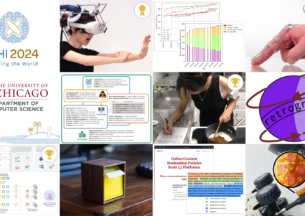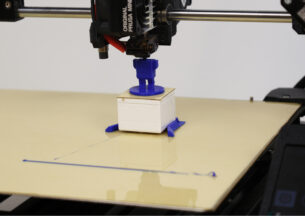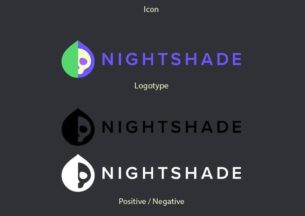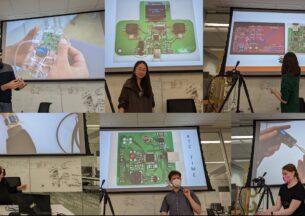UChicago, Stanford Researchers Explore How Robots and Computers Can Help Strangers Have Meaningful In-Person Conversations
Have you ever found yourself in a situation where you are sitting next to a stranger and something about them catches your attention in a positive way? Maybe they are reading a book that you love, or you think their sense of fashion is on point. Perhaps they just seem like they could be a great person to get to know. Chances are you’ve been around someone new that makes you want to strike up a conversation, but then the inner dialogue begins:
“They’ll think I’m weird.”
“What if they don’t want to chat?”
“What would I even say?”
“Will this come off wrong?”
You give in to the intrusive thoughts and return to scrolling through your phone. Guess what? You aren’t alone.
Recent studies have shown that people often pass on engaging with strangers, in part because they believe the negative consequences will take precedence over the many benefits of social engagement. Researchers Alex Wuqi Zhang, Ting-Han Lin, Xuan Zhao (Stanford), and lead investigator Assistant Professor Sarah Sebo from the University of Chicago’s Department of Computer Science pondered what would happen if we used technology to help facilitate these interactions instead of as a way to avoid them.
“People underestimate how much enjoyment they might gain from socializing with others, including strangers, and instead overestimate how awkward and uncomfortable the conversation would be,” said second-year PhD student, Alex Wuqi Zhang. “Given that we are in the robotics and computer science space, we wanted to see if technology can be leveraged to alleviate these psychological barriers and help people connect with others they might not be acquainted with already. We want to make it easier for people to have meaningful conversations with each other, which studies have shown to be beneficial from a physical and mental health perspective.”
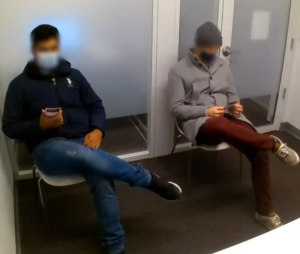 In a paper titled “Ice-Breaking Technology: Robots and Computers Can Foster Meaningful Connections between Strangers through In-Person Conversations”, the team detailed a first-of-its-kind study, which tested how well a humanoid robot, computer screen, and poster could be at procuring meaningful conversation between strangers. 49 pairs of previously unacquainted participants were placed in a room with one of the three facilitators. From there the robot, computer screen, or poster would pose three, progressively-deepening questions for the strangers to engage with. The team examined how many of the strangers interacted with each other, how easy it was to start the conversation, how long participants spent discussing the deeper questions, how connected they felt to the other person, and how positive the conversation experience was overall.
In a paper titled “Ice-Breaking Technology: Robots and Computers Can Foster Meaningful Connections between Strangers through In-Person Conversations”, the team detailed a first-of-its-kind study, which tested how well a humanoid robot, computer screen, and poster could be at procuring meaningful conversation between strangers. 49 pairs of previously unacquainted participants were placed in a room with one of the three facilitators. From there the robot, computer screen, or poster would pose three, progressively-deepening questions for the strangers to engage with. The team examined how many of the strangers interacted with each other, how easy it was to start the conversation, how long participants spent discussing the deeper questions, how connected they felt to the other person, and how positive the conversation experience was overall.
“We ran our user study at Mindworks, which is a behavioral science center operated by the Roman Family Center for Decision Research at the University of Chicago Booth School of Business,” stated Zhang. “We recruited people off the streets using the cover story of having them participate in a memory retention challenge. We had them read some articles and then told them we would test their memory on what they read after spending some time in a waiting room. There, they were met with another participant and one of the three conversation facilitators to start the actual study.”
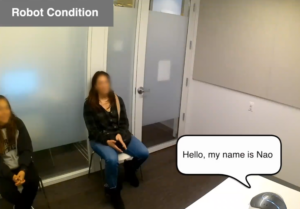 The first question was a shallow, ice-breaking question: What is the best TV show you’ve seen in the last month? Then participants were asked to share one thing they are most grateful for in life, followed by a meaningful memory they were then asked to explain. If the two strangers were in the robot condition, a Softbank Robotics NAO robot introduced itself and posed the three questions, pausing for three minutes in between. The computer screen condition shuffled through a slideshow on a monitor, accompanied by a bell sound every three minutes to alert participants to a new question. In the poster condition, a 2×3 foot poster prompted the strangers to engage in a conversation about the three listed questions. Once the waiting period was over, participants were brought into a separate room and debriefed on the real purpose of the study.
The first question was a shallow, ice-breaking question: What is the best TV show you’ve seen in the last month? Then participants were asked to share one thing they are most grateful for in life, followed by a meaningful memory they were then asked to explain. If the two strangers were in the robot condition, a Softbank Robotics NAO robot introduced itself and posed the three questions, pausing for three minutes in between. The computer screen condition shuffled through a slideshow on a monitor, accompanied by a bell sound every three minutes to alert participants to a new question. In the poster condition, a 2×3 foot poster prompted the strangers to engage in a conversation about the three listed questions. Once the waiting period was over, participants were brought into a separate room and debriefed on the real purpose of the study.
The results produced some surprises, including that it didn’t matter which condition participants were exposed to; all of them ended up talking to each other while in the waiting room.
“One of the most surprising aspects of this study for our research team was people’s overall willingness to engage with someone they’ve never met before, given that we only provide a small push in the right direction,” said Sebo. “Our findings support the idea that, while people may not be willing to talk with a stranger on their own, even a small nudge (e.g., a conversation question displayed on a computer screen) may be enough for a person to engage in deep conversation with someone they’ve never met.” “
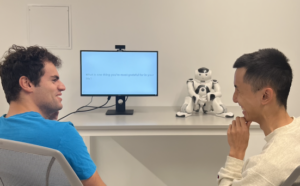 Aside from the initial surprises, the team found that the robot was much more effective than the poster and marginally more effective than the computer screen at getting strangers to spend more time engaging with the deeper questions, a finding that correlated with an increased level of vulnerability and happiness participants experienced during the conversations. Those in the robot and computer screen conditions also reported significant mood improvements after the study, giving weight to the idea that technological facilitators can be beneficial to our wellbeing.
Aside from the initial surprises, the team found that the robot was much more effective than the poster and marginally more effective than the computer screen at getting strangers to spend more time engaging with the deeper questions, a finding that correlated with an increased level of vulnerability and happiness participants experienced during the conversations. Those in the robot and computer screen conditions also reported significant mood improvements after the study, giving weight to the idea that technological facilitators can be beneficial to our wellbeing.
“People often put the blame on technological devices for preventing humans from socializing and connecting with each other while they are in close proximity,” said Zhang. “Our study has shown that if technology is used correctly, it can actually have the potential to encourage those deeper and more meaningful conversations between individuals who are face-to-face. That’s something that we don’t think has been done before. We think it’s really powerful considering how our socialization and connection with people can really have some profound mental and physical health benefits.”
The team hopes that these results help future researchers and public planners weigh the unique advantages of technological devices against the lower cost options, like posters, when deciding how to best facilitate meaningful connections in public spaces. Even if it isn’t as advanced as a robot, utilizing a digital screen that is already available within a waiting room, subway, or airport has the opportunity to provide people with the little extra help they might need to start a conversation.
The paper will be presented at the upcoming CHI Conference in April. To learn more about this study or other ways in which researchers are using technology to improve people’s lives, visit the University of Chicago’s Human Robot Interaction (HRI) Lab.




